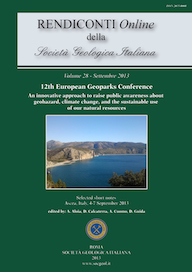
Origin of high radon levels in karst spring mixed waters – the case-study of the Capodifiume spring group, National Park of the Cilento and Vallo di Diano -European Geopark (Southern Italy)
Domenico Guida (b,c), Michele Guida (a,c,d), Davide Guadagnuolo (a,c), Albina Cuomo (b,c), Kay Knöller (e), Michael Schubert (e), Vincenzo Siervo (c) & Aniello Aloia (f)
(a) Department of Physics, University of Salerno, via Ponte Don Melillo, 84084, Fisciano (SA), ITALY; davguada@gmail.com
(b) Department of Civil Engineering, University of Salerno, via Ponte Don Melillo, 84084, Fisciano (SA), ITALY.
(c) C.U.G.RI., interUniversity Centre for Applied Research on the Prediction and Prevention of Major Hazards, University of Salerno, 84084 Fisciano (SA), Italy.
(d) I.N.F.N., National Institute for Nuclear and Subnuclear Research, Salerno Branch, University of Salerno, Via Ponte don Melillo, 84084 Fisciano (SA), Italy.
(e) Helmholtz Centre for Environmental Research – UFZ, Permoserstr. 15, 04318 Leipzig, Germany.
(f) Cilento and Vallo di Diano Geopark.
Abstract
Keywords
Get Full Text